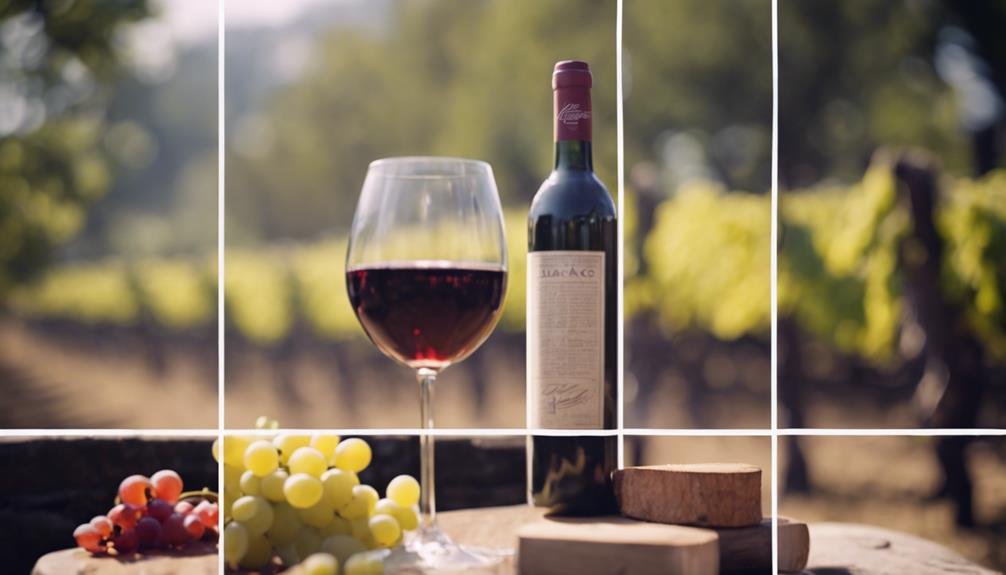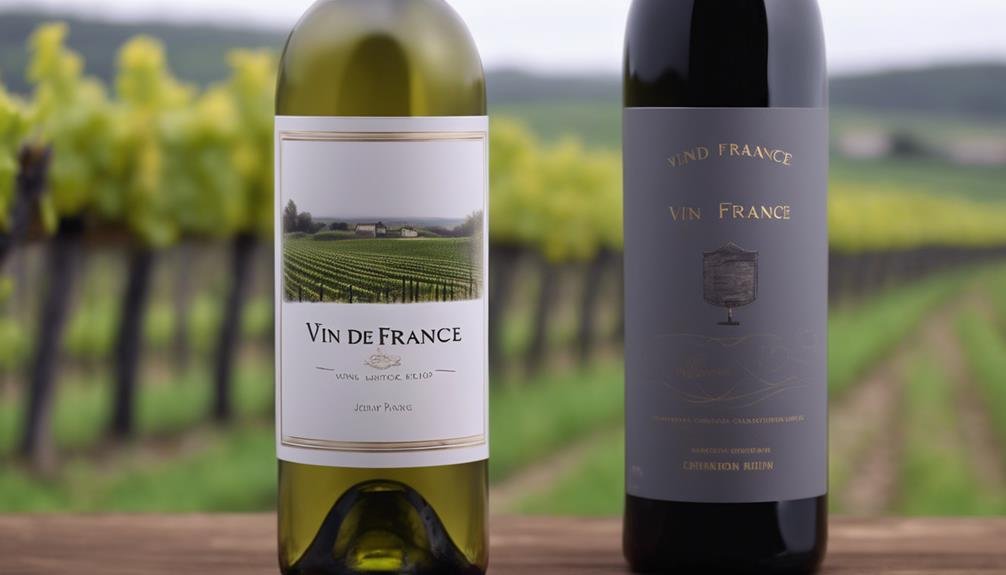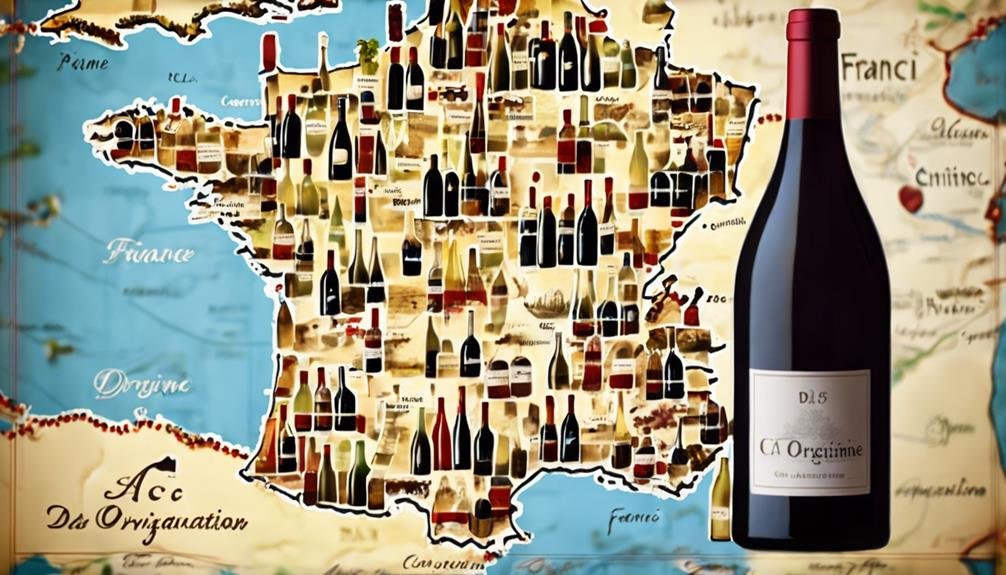Exploring the intricacies of French wine classifications, the Appellation d'Origine Contrôlée (AOC) system governs quality and regional specialties across 363 regions. Regulated by INAO, it encompasses tiers like regional, sub-regional, and commune/village classifications. This system protects product authenticity and quality by upholding strict standards. AOP designations, such as Bordeaux and Burgundy, showcase specific regions and terroir influence, assisting consumers in understanding diverse flavors. Established in 1935, the AOC system guarantees adherence to quality guidelines. IGP wines offer more grape variety flexibility with less stringent terroir regulations compared to AOC. Vin De France represents the lowest-quality wines, allowing for blending variations.
Aoc: Appellation Dorigine Contrôlée
A cornerstone of French wine classification, the Appellation d'Origine Contrôlée (AOC) system meticulously governs the quality standards and regional specialties of wines and spirits across 363 designated regions in France.
Established to protect regional food specialties, the AOC sets specific standards to safeguard the authenticity and quality of products. This system, overseen by the INAO, includes various tiers like regional, sub-regional, commune/village, and special classifications, each highlighting the unique characteristics of the designated area.
AOP Designations and Examples
Designations within the AOP system offer valuable insights into the origin and quality of French wines. This is exemplified by renowned regions such as Bordeaux, Burgundy, Médoc, Chablis, and Pauillac. These AOP designations not only highlight specific wine regions but also showcase the unique terroir influence that shapes the characteristics of the wines produced there.
For example, Bordeaux wines are known for their elegant blends, while Burgundy wines often exhibit a more nuanced and terroir-driven profile. Understanding these AOP designations can help consumers appreciate the diverse range of flavors and styles that different wine regions in France have to offer. This knowledge makes it easier to navigate and select wines based on personal preferences and occasions.
History of AOC Classification

Established in 1935 by the INAO to safeguard the reputation of French wines, the AOC classification system has played a crucial role in ensuring the quality and authenticity of wines from classic winemaking regions in France.
The development timeline of AOC saw Baron Pierre Le Roy supporting its creation, with the first designated AOC being Châteauneuf-du-Pape. AOC laws were established in 1937, setting specific standards for renowned wine regions like Champagne, Bordeaux, and Burgundy.
Key influencers, such as Baron Pierre Le Roy, have been instrumental in shaping the AOC classification system, ensuring that wines from designated regions adhere to strict quality guidelines. This system has been essential in maintaining the reputation and distinctiveness of French wines on a global scale.
IGP Wines: Characteristics and Differences
The IGP classification, also known as Indication Géographique Protégée, provides a distinct alternative to the stringent standards of AOC wines, offering producers more flexibility in grape varieties and winemaking practices.
- IGP Varieties: IGP wines allow for a wider range of grape varieties to be used in winemaking compared to AOC wines.
- Terroir Influence: While terroir still plays a role in IGP wines, the regulations are less strict, allowing for more experimentation and expression of different terroirs.
- Production Standards: IGP wines have fewer production restrictions than AOC wines, giving winemakers more freedom in their techniques.
- Quality Spectrum: IGP wines offer a broader spectrum of quality levels, providing consumers with a diverse selection to choose from based on their preferences.
Vin De France: Lowest-Quality Category

Widely recognized as the lowest-quality category in French wine classification, Vin de France encompasses basic table wines sourced from various regions across the country. These wines are known for their simple and straightforward characteristics, lacking the specific regional identity found in higher classifications.
Grapes used in Vin de France wines can be harvested from anywhere in France, allowing winemakers flexibility in blending different varietals. The winemaking standards for Vin de France are the least stringent among French wine categories, providing producers with more freedom in their production methods.
Despite being considered the lowest tier, some wineries take advantage of this flexibility to create unique and innovative wines that may deviate from traditional practices.
Frequently Asked Questions
How Are AOC Wine Labels Regulated and Approved?
Regulatory oversight of AOC wine labels involves adherence to strict standards set by INAO. Approval process includes verifying origin, production methods, and quality. A rigorous system guarantees that wines meet designated criteria before receiving AOC classification.
Can IGP Wines Be Upgraded to AOC Status?
In the world of French wine, the advancement process from IGP to AOC status is attainable with adherence to stringent quality standards. However, this progression requires meeting specific criteria set by regulatory bodies overseeing wine classifications.
Are There Any Exceptions Where Vin De France Wines Excel?
Exceptional quality and unique terroir can be found in exceptional Vin de France wines where innovative winemakers craft distinctive blends outside AOC restrictions. These wines showcase creativity and diversity, appealing to those seeking unique French wine experiences.
What Impact Does Brexit Have on AOC and IGP Wines?
Brexit implications on AOC and IGP wines may include changes in trade agreements affecting export/import processes, tariffs, and regulations. Adapting to new trade dynamics post-Brexit could impact the production, distribution, and pricing of French wines.
How Do AOC Regulations Differ From PDO Regulations in the Eu?
AOC regulations in France differ from PDO regulations in the EU. AOC emphasizes terroir and traditional methods, while PDO encompasses broader EU standards. This impacts wine classification, with AOC focusing on regional specificity and PDO covering a wider geographic range.
Conclusion
To sum up, the intricate world of French wine classifications, particularly AOC, offers a glimpse into the rich history and quality standards of winemaking in France.
From the esteemed AOP designations to the contrasting IGP and Vin de France categories, each classification holds its own significance in showcasing the diverse terroir and craftsmanship of French wines.
Delving into the nuances of AOC wine reveals a mesmerizing tapestry of tradition and excellence that continues to captivate wine enthusiasts worldwide.
